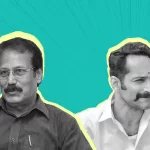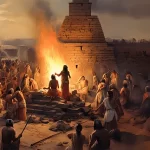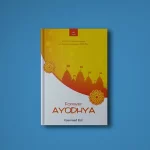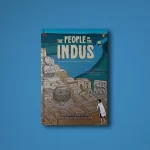‘The People Of The Indus’: Time Travel To Harappan Civilization Through Illustrated Panels
The People of the Indus: and the birth of civilization in South Asia. Nikhil Gulati and Jonathan Mark Kenoyer. Penguin Random House India. Pages 173. Rs 599.
The Harappan civilization is both a mystery of the past and of the present.
A mystery of the past because its real nature has not yet been completely unveiled and a mystery of the present because there are still living and dynamic threads connecting the present Indian culture to this civilization that was more than 5,000 years old.
While a vast abyss of time separates the present Indian society from the Harappan civilization, it is the stream of culture that unites us with them.
There are not many books in India that capture the excitement of unraveling the Harappan mystery to our children.
In the history textbooks, one used to come across the same old, dull pictures of the ‘great bath’ and a few pieces of jewellery, almost memorized as a ritual.
Comparing the efforts made by other countries to engage their younger generations with their past through popular books and textbooks, one can’t help but feel envious.
In 1996, French-Indian writer Michael Danino penned a book titled, Invasion that Never Was, which delved into the Aryan Invasion theory and discussed the Harappan civilization.
A classroom version of the book was tailored for young children. While some may argue it shows bias against the Indo-European (‘Aryan’) migrationist school, it serves as a well-designed and welcome step in introducing young minds to the mysteries of the Harappan civilization, despite some initial inaccuracies.
In 2002, historian Dr Upinder Singh wrote Mysteries of the Past Archaeological Sites for children. Illustrated by Gautam Trivedi and published by National Book Trust, the book is a wonderful introduction to all the archaeological sites in India, from north to south.
The book’s lucid writing style and captivating illustrations evoke the sense of mystery surrounding these ancient sites, while also demonstrating how meticulous scientific archaeology can gradually unveil these enigmas. It serves as an inspiration for young readers to consider archaeology as a potential profession.
In 2020, writer Sanjeev Sanyal brought out a children’s version of his 2016 book The Ocean of Churn, as The Incredible History of the Indian Ocean, with illustrations from Nikhil Gulati.
The book added another important milestone in taking history to children.
Sanyal admirably accomplished the challenging task of capturing the magnificence of Indian culture’s antiquity, continuity, and global interactions.
The latest addition to this much needed genre of ‘taking ancient Indian history to younger generation’, is the book-The People of the Indus: and the birth of civilization in South Asia.
The story line and illustration is done by Nikhil Gulati and the content is mostly provided by Jonathan Mark Kenoyer.
Gulati is both an accomplished illustrator and a fascinating story teller.
His illustrations are crisp and filled with accurate details. One can go through each frame again and again and find a detail to fascinate oneself with – a detail that usually has come from an archaeological discovery and was then condensed and presented to us in the panel.
Kenoyer has spent a lifetime with Harappan archaeology, mostly in Pakistan. His understanding of Harappan culture and civilization is both empirical and holistic.
His collaboration in this work adds a strong element of authenticity. In his introduction, Kenoyer makes another significant observation:
More recently studies of ancient human DNA from archaeological skeletal remains have become an innovative way to study ancient populations. … The one fragmentary DNA recently recovered at Rakhigarhi provides some hope that more DNA will eventually be recovered as new techniques for recovery are developed. However, we must remember that only a very small segment of Indus society practiced the burial of the dead. Most of the ancient Indus dead would have been treated in other ways such as cremation, water burial or exposure in the forest. Since we will never be able to recover DNA from most of the people who lived in these cities, we need to understand from the outset that we may never sort out the diversity of people living in these early urban centres from DNA studied alone.
(p. x)
The subject chosen is a veritable mine field.
A small slip and one could be branded as a ‘right-wing zealot’ or a ‘colonised sepoy’. But the authors stick to facts and facts alone, and do not shy away from the larger picture that emerges from the science of archaeology and the knowledge of Indian culture and society.
Once one finishes the book, he or she, child or adult, even a graduate in history, will learn quite a lot of facts the Harappan civilization.
Moen-jo-Daro means ‘Mound of the Dead’. That is what every history book told us. In this one though, the author points out in a note to a panel: ‘The name could have come from the Sindhi term Mohan-jo Daro or the mound of Mohan (Krishna)’ – a small detail that our textbooks ignored.
The book reveals the city’s evolution over time, showcasing different people moving in, well-planned street layouts, house designs, and even multi-storey houses.
The reconstruction of the Great Bath, surrounded by a brick base enclosure and wooden superstructure, is similar to structures seen in the temple ponds of southern India, especially in Kerala and southern Tamil Nadu.
Harappan culture is depicted as a nuanced idea, evolving from the confluence of ‘regional’ cultures, with various villages gradually connecting to form an urban centre. The authors explain this process in an easily understandable way.
The book’s panels offer a non-linear flow, bringing the Harappan center to life with current archaeological discoveries and engaging narration, adding a magical touch to the reading experience.
An informative infographic map displays Harappan centers along the Indus and Ghaggar-Hakra (Saraswati) rivers, which can be updated with new archaeological discoveries. The authors suggest including this map in textbooks and updating it every five years in consultation with archaeologists.
The next chapter explores why Harappans never built pyramid-like buildings, focusing on their decentralized structure.
The book even presents a quasi-fictional depiction of something resembling elections, mostly reconstructed from archaeological data.
This man has just been elected to city council. He comes from the influential family of copper traders which runs several workshops in city and also mines ore. Tradition has it that this man’s ancestors had come to Mohenjo Daro with their belongings packed in just one bullock cart, a long time ago. Copper workers and traders of the city have nominated him to the council. … And it calls for a big celebration. Guests have been invited, a feast is being prepared and a theatrical performance is about to design.
Earlier, Western scholars like Wheeler and Piggott had presented Harappan society as ‘culturally stifled by a rigid bureaucracy.’ A derivative of this view was that symbolic expressions were extremely standardised and there was little room left for creativity.
With illustrated examples this old view is falsified:
However research has since turned this perception on its head. Several clues to the rich cultural lives of people continue to be found in the archaeological record dispelling the myth of a dull society. … With more excavations more signs of a vibrant culture are emerging.
(p.52)
Their proto-astronomical observations, their number system, their weights system, the flora and fauna of Indus and Ghaggar valleys, their probable religious beliefs and practices, their water management systems – all unfold in the coming panels.
One panel shows similarity between Mulabandhasana and the Indus seal ‘Yogi’. One wonders why we never had such a simple depiction in any of our textbooks?
In the chapter titled ‘Journey of a Bead,’ Lothal assumes a significant role.
Gulati mentions in a panel that the big rectangular structure at Lothal has been referred to as a dockyard for boats by some, but many scholars disagree. He proposes that it was likely a water reservoir tank (p.88).
However, the study of marine plankton in that rectangular structure at Lothal provides a different perspective. Microfossil deposits of marine organism Foraminifera have played a crucial role in helping scientists determine the nature of the rectangular structure at Lothal, which was discovered by the late archaeologist Shikaripura Ranganatha Rao.
Dr. Rajiv Nigam, a senior marine scientist, explains how an interdisciplinary investigation resolved the situation:
Out of several important structures excavated, a large rectangular basin like structure became the most important and disputed one. … One school proposed the possible use as ‘dockyard’ for maritime activities whereas, other school opined in favour of ‘fresh water storage tank’ for agriculture and bathing. This controversy was finally solved with the help of foraminiferal studies. Since foraminifera are almost exclusively marine organisms, their presence and absence could be a decisive factor in interpreting whether any ancient water body was filled with fresh or marine (brackish) water. … It was finally summarized that the rectangular structure was a dockyard, connected through open marine environment with high tidal range and thus settled an old archaeological controversy.
Application of foraminifera in Marine Archaeology: examples from Indian waters, Gond.Geological Magazine, 2010
There may be still objections. Yet for young readers the above use of marine microfossils in deciding a question of archaeology would have made an exciting reading.
The book then moves to the most controversial aspect of Harappan civilization – what language did they speak and what was their relation to Vedic people?
The book presents the arguments of the invasionist school without caricaturing them. The authors also present Michael Witzel’s thesis that the Vedic people who entered the region first encountered Munda culture and only later the Dravidian, thus making Munda a strong candidate for the language of the Harappans (p.121).
However, the following panels present counter-arguments, including the lack of archaeological evidence for an invasion or large people’s movement into the Indus regions, astronomical data supporting the antiquity of the Vedas, and mistranslations of Vedic passages.
Additionally, the absence of horses, considered the Achilles heel of the indigenous Vedic school, is discussed.
The authors use the presence of retroflex consonants in the oldest books of Rig Veda, which are not found in other Indo-European languages but are present in Munda and Dravidian, as evidence of the very early presence of Indo-European language speakers in the Indus region.
The book then delves into a detailed description of the paleo-river Saraswati.
The book combines both the so-called indigenous and migrationist schools, offering a credible and thoroughly researched argument for a prolonged interaction model.
According to this model, population groups have been moving in and out of the region for centuries, if not for at least a millennium.
To me, it seems likely that Vedic ideas and languages were present in South Asia much earlier that the ‘migrationists’ would have it. … And that the earliest verses of the Rig Veda were composed when the Saraswati was in full flow. During the course of the Indus civilization the Vedic belief systems remained marginal, perhaps carrying on -and evolving- along side the mainstream Indus culture. However once the Indus civilization declined, Vedic belief systems spread and became more dominant as people migrated eastwards.
(p.157)
But what were actually these ‘Vedic belief systems’?
Fire rituals? Then what about Kalibangan fire altars?
Soma ritual?
Varuna worship?
According to Iravatham Mahadevan, definitely a migrationist, Soma held a significant place in Harappan culture and was later adopted by the incoming ‘Aryans’.
On the other hand, Asko Parpola considers Soma-Indra as one set and Varuna-Sura as another, with the latter belonging to an earlier and more matured period of civilization.
According to Mahadevan, the Soma ritual, a central aspect of Vedic tradition, is connected to one of the most prevalent symbols of Harappan civilization, the Unicorn symbol.
If either Mahadevan or Parpola, or both, are correct, then the core of the ‘Vedic’ religion is deeply rooted in Harappan culture. In that case, we can conclude that it is likely a marginal linguistic system, slowly evolving within the Harappan milieu, which itself was a synthesis of non-Indo-European (IE) and IE linguistic elements that eventually became dominant.
Was the Varna system then part of the ‘marginal’ Vedic religion?
The book highlights an essential characteristic that it identifies as potentially unique to Harappan civilization: the decentralized and almost egalitarian nature evident in its archaeological remains. The narrator informs readers about this in three panels:
The unusual nature of the Indus civilization has already been noted. While in most ancient civilizations the rulers stand out clearly, here they are inconspicuous. Further, there is complete lack of evidence for warfare over here. To my mind these two aspects appear to be connected. Had there been all-powerful rulers enjoying wealth and privilege far beyond the average person, it may have led to more serious competition for power and thus the need for warfare. But this never happened.
(p.133)
Here is an interesting passage from a paper Kenoyer published in 1995:
An important mechanism of control by the elites in later period in South Asia has been the control of ritual knowledge and legitimation through the restriction of access to written or memorized documents. Although repeatedly challenged by reformers and benevolent leaders, the literate Brahminical elite were able to dominate ritual ideology and in many cases socio-economic organisation through their ability to control knowledge. In the context of Indus state, the limited distribution of written materials and their use by elites suggests that this pattern of control may have started as early as the first urbanism in the Indus cities.
Ideology and Legitimation in the Indus State as revealed through Symbolic Objects, The Archaeological review, (Ed. Asma Ibrahim & Kaleem Lashari), 1995 Vol. 4, Iss. I & II, p. 117
This observation by Kenoyer and the two observations made by Gulati may be related.
From all the descriptions we have of ancient and classical India, the Brahmins never lived a rich affluent life.
In a typical pre-colonial Indian village, there were various quarters with some gradations, but overall, there wasn’t much difference in terms of affluence and richness. The huts where Brahmins lived and the huts where farmers lived were quite similar. Archaeologically speaking, the differences between such habitation sites would be minimal.
Even in later periods, the prominent buildings in ancient and classical India were primarily temples, which were common structures housing water bodies, granaries, associated hospitals, and Veda pathasalas (schools).
However, large palaces were conspicuously absent during these periods. It was only during medieval and post-medieval India that such palaces began to appear in the country.
According to Iravatham Mahadevan, the human bearer symbols with jar and lance seen in Harappan seals represented officials with priestly and military duties, respectively.
Another repeated terminal sign of a harrow was interpreted as ‘farmer, tiller, tenant,’ and this sign, combined with the ‘jar,’ ‘lance,’ or ‘bearer’ signs, suggested a combination of categories or service under them.
Simple humans without the bearer symbols were considered ‘servant, attendant, or lower functionary.’
While in modern times, the Varna system has been perceived as or become a perverted, unhealthy, and undemocratic hierarchy, in terms of resource allocation and socio-economic inequality, it did not harbor as many disparities as most other contemporary social systems.
It is quite possible that this was the dominant social system of Harappa, which later integrated into the evolutions from Harappan civilization. Mahadevan even speculates that the pre-Mauryan Janapadas could have descended from this aspect of Harappan civilization.
In other words every element that we see in Vedic tradition has been identified by one scholar or the other as the predominant feature of Harappan society.
The current book, being a masterpiece in itself, would have been enriched further if it had included the scholarly and insightful views of Mahadevan.
The book excels itself in showing the slow and steady decline of Harappan civilization and its various causes. It is not dramatic or apocalyptic. Instead, Gulati creatively showcases his visual and storytelling skills to present the facts and scientific evidence to young readers, illustrating how a civilization declines and then undergoes transformation.
While the term “second urbanization” may be considered a misnomer, there is a compelling case for continuity with significant changes.
This is a book that is a must in every school library. This is a book which should be a mandatory guide to every text-book writer.
Only a few people are fortunate enough to experience and comprehend a living bronze culture with significant continuities while being an integral part of that culture itself. Nikhil Gulati not only possesses this blessing but has also utilized his creative talents in visualization and storytelling to produce this marvellous contribution.





